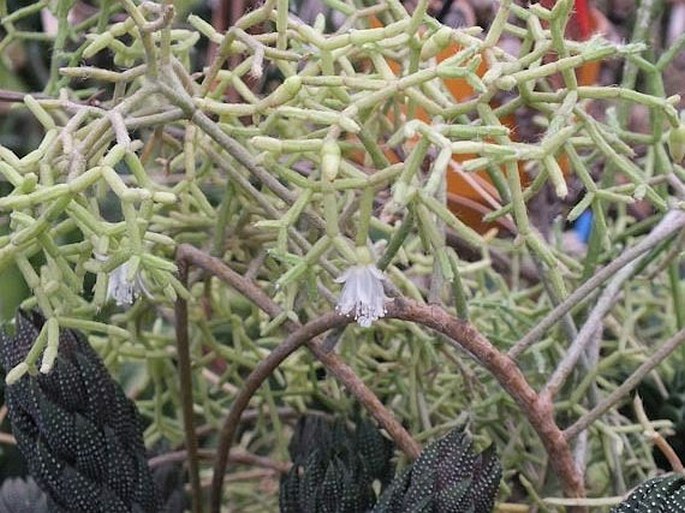Syn.: Erythrorhipsalis cereuscula (Haw.) Volgin, Hariota cereuscula (Haw.) Kuntze, Hariota saglionis Lem., Rhipsalis saglionis Otto, Rhipsalis brachiata Hook., Hariota cereuscula Kuntze, Rhipsalis saglionis (Lem.) Otto ex Walp.
Family: Cactaceae Juss.

Distribution: From northern Uruguay, northeastern Argentina (Corrientes, Entre Ríos, Misiones) and eastern Paraguay to eastern Brazil (Mata Atlântica, Pantanal) – from northeastern Pernambuco through São Paulo to Artigas and Entre Ríos.
Ecology: Epiphytic species growing on tree trunks and branches in tropical forests, from seacoast to 1700 m asl., sometimes lithophytic, but not particular to to the substrate as it can root from any small piece of stem or branch. Blooms after the dry season.
Description: Stems and branches terete; stems slender, usually elongated and drooping, often erect, sometimes to 60 cm tall, crowned by a cluster of short branches; upper branches short, 2 to 6 times as long as thick, somewhat angled, areoles bearing 2 to 4 short bristles, aerial roots present to facilitate adhesion to surfaces. Flowers terminal or near the ends of the branches, 16 mm across; petals up to 12, spreading, white or pinkish, some with yellowish midrib, tips orange, well showing on buds; stigma lobes 3 or 4; anthers white; ovary green. Fruit is a white obovoid berry.
Use: Cultivation very easy, spreads easily through the greenhouse due to easy rooting of even minute parts.
Threat and protection: This species is protected by CITES.




These images were taken in culture.


